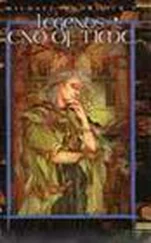Bell advocated a simple and robust answer to this in many of his writings, including his 1980 paper: the complete system formed by the particles and the instruments measuring them is always defined in the last resort by positions. In any quantum state, different sets of positions are present simultaneously, but it is always positions that are present. The different kinds of quantum measurement, giving alternatively position-type and momentum-type outcomes, arise because the same sets of positions of the measured system are made to interact with characteristically different sets of instrument positions. Everything is ultimately inferred from positions. This is exactly my position. Platonia is the universal arena. To Bell’s arguments – and gut conviction – for this standpoint I would add the impossibility of obtaining a satisfactory theory of inertia and time unless positions are fundamental.
Now, what did Bell regard as the physical counterpart of psychological experience? Is it in the wave function, as Everett and many others have assumed, or in matter configurations? Bell, like myself, opts for the latter: ‘It is ... from the xs [the configurations], rather than from ψ, that in this theory we suppose “observables” to be constructed. It is in terms of the xs that we would define a “psycho-physical parallelism” – if we were pressed to go so far.’ Although Bell does not spell out his parallelism too explicitly – he does not seem to want to be ‘pressed’ too far – it is clear from the way he makes memories and records responsible for our idea of the past, rejecting any ‘thread’ connecting configurations at different times, that subjective awareness of both positions and motions of objects must be derived from the structure in one instantaneous configuration. The self-sentient configurations must be time capsules. Not only the kingfisher but also the appearance of its flight must be in one configuration, for nothing else would be logically consistent. The main lessons I draw from Bell’s paper are incorporated in the many-instants interpretation that I favour.
THE MANY-INSTANTS INTERPRETATION
This is based on a conjecture that I shall try to justify in the next chapter. Here I simply assume it. It is that the universe is described by an equation of Wheeler-DeWitt type, which may have one or many solutions, and that each of its well-behaved solutions concentrates its probability density on time capsules. Bell showed that this does happen if time exists, and if evolution is real and commences from a low-entropy state. Since I deny time, I cannot appeal to a special initial state. There is only one state and no evolution. That is the problem for the next chapter; here I want to describe the kind of state I conjecture and how it must change our view of history.
Most important is a distinction between two different kinds of variable. Bell showed how the alpha-particle semiclassical state contains latent histories which then become entangled with the cloud-chamber electrons. The electrons could be in a huge number of different configurations, but in the Mott-Heisenberg solution the only configurations with high probability are those that look like alpha-particle tracks. Something similar must happen in cosmology, but there is a difference.
Imagine a swarm of 5000 bees. Its configuration space has 15,000 dimensions. However, from a distance we cannot see the individual bees, only the overall position of the swarm and, say, its size (radius). These are four dimensions of the configuration space. In such situations a few of the configuration-space dimensions describe the system’s large-scale properties, and the remaining, much more numerous dimensions describe the fine details. The corresponding large-scale and small-scale configuration spaces are illustrated in Figure 52.
Any point in Figure 52 represents a possible position of all the bees. Horizontal motion from a point changes the swarm’s position and size without changing the relative position of the bees within it. Vertical displacement leaves the swarm’s position and size unchanged but rearranges the bees. Since this can happen in so many ways, each vertical point actually represents multitudinous possibilities. Alas, we have only the vertical to represent them. Also, to make even a moderately realistic model of the universe, the horizontal positions should represent the positions of not just one swarm but many. Imagine, say, 100 swarms. Each horizontal position then represents one relative arrangement of their positions and sizes as complete units. Different vertical positions having the same horizontal position then correspond to all rearrangements of the bees that leave the swarms as they are. This is very schematic, but it is sufficient to explain the scheme.
If the wave function of the universe is static, quantum cosmology reduces to the question of how its values are distributed in Platonia. For the moment, I shall simply give you my guess; arguments for it come later. My guess is a special distribution closely similar to the cloud-chamber one described by Bell. In most of Platonia the wave function has extremely small values – the blue mist has negligible intensity. However, in a few special regions, distributed over a large area, the blue mist’s intensity is, relatively, hugely higher. These regions correspond to some arrangement of the swarms, determined by the horizontal position, and to the detailed positions within them, determined by the vertical positions. It is in the probabilities for these detailed positions that the blue mist is extraordinarily selective. The probabilities for the horizontal positions are relatively uniform over quite large regions. By themselves, they represent a dull state of affairs. The situation is transformed by the configurations that specify the fine details within the swarms. At the very rare configurations where the blue mist shines brightly, the fine details look like records of a history of the swarms as complete units. They suggest that the swarms have moved in a classical history from some past up to a present instant, in the position they now occupy.
This is illustrated in Figure 52, in which the points X and Y in Platonia have large-scale positions B and D . The fine details at X and Y seem to represent records of how the swarms have moved from earlier configurations A and C along curves AB and CD in the large-scale (horizontal) configuration space. They seem to be records of these large-scale histories. The blue mist has a high intensity not only at X and Y but also, for example, at P and Q, at which points the fine details suggest they represent records up to the intermediate stages E and F in the histories AB and CD .
By no means all details need represent history. Footprints in the sand on a wide beach record the movements of people who have walked on it, but over much of the beach there need be no apparent records. Think again of the number of atoms in a pea. A tiny fraction of them can easily record the pea’s history up to its current present. The huge numbers we confront in physics explain why we may have wrong ideas of what history actually is. We may have jumped to a conclusion too quickly.
In the Newtonian picture, in which history is a curve in configuration space, it is extremely hard to understand how records arise. Even if a single curve is realized, any point on it could have any number of histories passing through it. How can one instantaneous configuration of particles suggest the motions that they have? However, if we keep an open mind about the laws that determine things, a fraction of a pea’s atoms may well seem to record a history of its large-scale features. This does not mean that all its atoms had a unique history. Without change in the pea’s large-scale structure, the same large-scale history could be coded in innumerable different ways by only a tiny fraction of its atoms. In the imagery of Figure 52, there will be a whole cloud of points X in the configuration space that correspond to the same large-scale configuration and to the same history up to it. The different points in the cloud simply code the same history in different ways. What is more, for each point along the large-scale history AB there will be a corresponding cloud of points that record the same history up to that point in different ways. There will be a ‘tube’ of such points in the configuration space. No continuous ‘thread’ joins up these points in the tube into Newtonian histories. The points are more like sand grains that fill a glass tube. Each grain tells its story independently of its neighbours. In any section of the tube, the grains all tell essentially the same story but in different ways, though some may tell it with small variations.
Читать дальше












